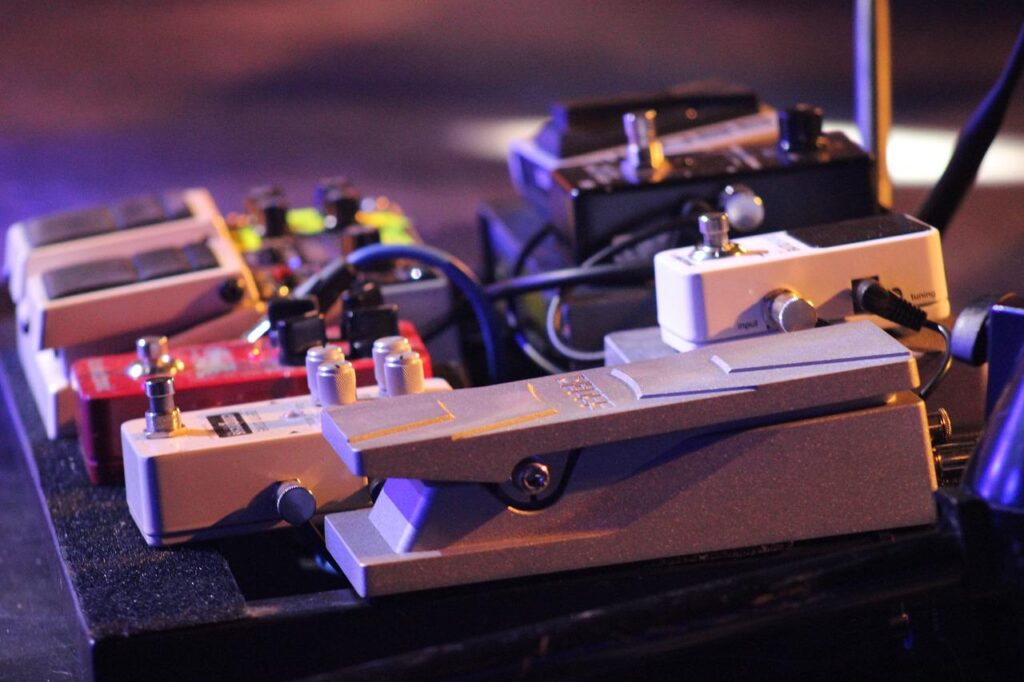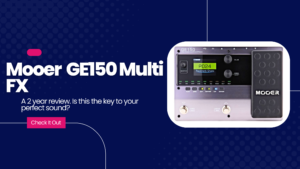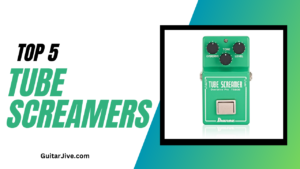Introduction
We’ve all heard the saying “the best things in life are free.” I’m here to tell you that’s a myth. The best things in life aren’t free they cost money and they come in the form of guitar effects pedals. That’s right: if you want the sweetest tone possible, then you’re going to need some help from some pedals. Luckily, there are so many different kinds of guitars and amps out there that it can be hard even for experienced players to figure out which combination will work best for them. So let this guide help! Here we’ll go over what exactly guitar effects pedals are and how they work (without getting too technical), what kind-of gear you might need to get started collecting them yourself, and finally some recommendations on which ones might be worth your time, if you’re just starting out on your journey into the world of guitarists who love their pedals more than their significant others (which is probably most).
What are guitar effects pedals?
If you’re new to the world of guitar effects pedals, this is a great place to start. While there are many different types and brands of pedals out there, they all do pretty much the same thing: they modify your guitar’s sound in some way.
Some common types include distortion (creates more “bite” or “growl”), delay (delays the sound for a few milliseconds), reverb (makes it sound like you’re playing in an echo chamber), auto wah (auto-tunes your guitar to create cool funky sounds), chorus/flange/phaser effect (makes one note seem like two separate notes) and looper pedal (records what you play and allows you to loop it over again).
In addition to these effects, there are also other ways that pedals can be used. For example, when playing live or practicing at home with headphones on, using amp modeling pedals gives you access to amps similar enough to those used by large touring acts like Metallica or Pink Floyd without having their entire setup in front of you!
Common types
Overdrive pedals
Overdrive pedals and distortion pedals are often referred to as the same thing however they are not as a beginner I’m going to set you off on the right path from the start. Overdrives are used to give your guitar a crunchier sound. Overdrive pedals are often used for blues and rock music because they lend themselves well to these genres.
Overdrive pedals usually have “gain” controls that let you adjust the intensity of the effect by increasing or decreasing it. They also usually have some sort of volume or level control to make sure that your signal doesn’t get too loud and overpower everything else on stage.
Distortion pedals
The distortion pedal is by far the most popular effects pedal of all. It’s used for making solos and riffs sound more aggressive, and can also be used to make your guitar sound fuzzy or like it’s being played through a tube amp. This effect works by increasing the gain of your signal—essentially, it makes the volume louder at certain frequencies while leaving other frequencies alone. The result is a tone that sounds less clean and more distorted, with an overall fatter sound. If you want to play rock music or metal, this is an essential tool!
Reverb pedals
Reverb pedals can be used to add a natural sounding echo to your guitar and create a spacey sound. Reverb pedals can also be used to create a sound like you are playing in an empty room. Most guitar amps have reverb built in however, if yours doesn’t then you might want to try a reverb pedal to give your playing some ambiance.
Chorus pedals
Chorus pedals are one of the most popular effects in all of guitar playing. They can add texture and depth to your tone, making it sound more lush and full.
Chorus pedals work by adding a slight detuned effect to your signal, which is then run through an analog delay engine that creates a series of pitch-shifted copies that are summed together with the original signal. These pitch-shifted signals are then mixed back together with your original guitar track, creating what many refer to as “spacey” sounding tones.
There are two types of chorus: analog and digital. Analog choruses typically have more warmth than digital ones because they use analog components instead of digital ones (i.e., transistors instead of microchips). For this reason alone, some players prefer them over their digital counterparts; however, if you’re just starting out on your effects journey I’d recommend sticking with a classic Boss CE-1 or similar pedal—they won’t break the bank but still give you plenty of room for experimentation!
Delay pedals
Delay pedals are used to create echo effects. When you want to hear something more than once, you can use a delay pedal to make it happen. They are most commonly used in guitar solos, to give a bit of depth and make it stand out. There are many different types of delay but they can simply be categorized into analog delays and digital delays.

What do I need to get started?
If you don’t have a guitar yet, we recommend starting with a Fender Stratocaster or Telecaster. These types of guitars are great for beginners because they’re easy to play and sound good right out of the box.
We would also recommend getting an amp before you buy any pedals, as they will be useless without something to boost their signal output. A good choice is one that has built-in effects, this will let you discover which effects like without buying them individually, you can then add your own pedals later on down the road when your playing style changes and evolves as it should!
Once you’ve gotten your first pedal, you might be tempted to go looking for another one. It’s easy to do! While some people collect guitars and others just stick with the one they already have, there are plenty of guitar players who enjoy collecting pedals as well.
If you’re someone who wants to start collecting pedals, there are a few things you should know:
You don’t need to buy all the pedals in one go. If something catches your eye and makes sense for you and your style of music, it’s okay to buy it immediately. But if there’s something else that looks cool or interesting later on down the line, then that’s fine too!
There are so many different kinds of effects pedals out there that even experienced players can find themselves overwhelmed by choice sometimes! In fact, this can be part of what makes them so fun—it means there’s always something new waiting around each corner if we’re willing enough.
You can find pedals used or new. It’s possible to find good deals on used pedals at pawn shops, garage sales and eBay. Buying used might save you some money in the short term but buying new has advantages too—you get better quality gear that’s covered by warranty and often includes extra goodies like instructional materials and power adapters.
You can find pedals online or in stores. You can usually find everything online without leaving your couch, let guitarjive.com guide you in your quest of buying pedals.
Conclusion
So, that’s it! We hope we’ve given you some good information to start your journey as a pedal collector. I know we’ve not listed every guitar pedal type, but there should be enough to wet your appetite as a beginner. If you have any questions or comments, feel free to leave them below. Check out my beginner’s guide to guitar amplifiers.





Pingback: How To Dial In Your Amplifier Settings For Great Guitar Tone | Guitar Jive
Pingback: A beginner’s guide to guitar amplifiers. | Guitar Jive
Pingback: The Great Distortion Vs Overdrive Debate: What Is The Difference?
Pingback: A 5-Step (How To) Tremolo Pedal Guide | Guitar Jive